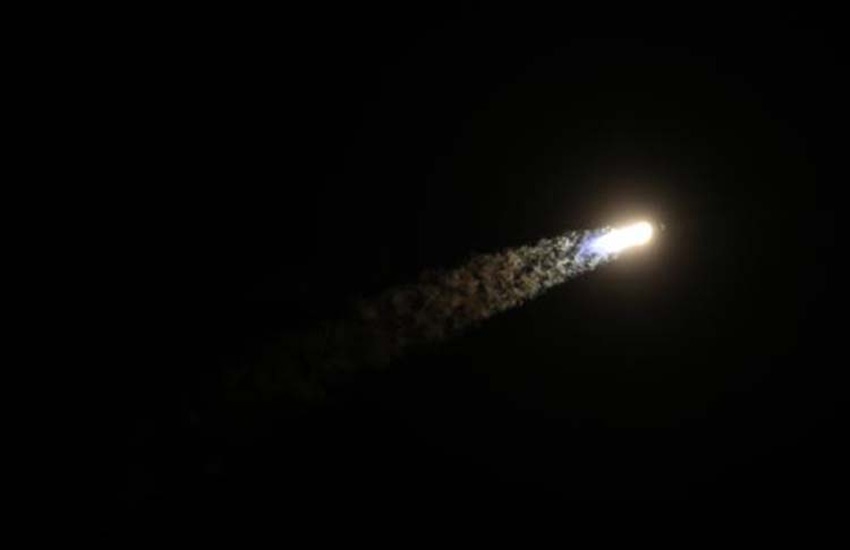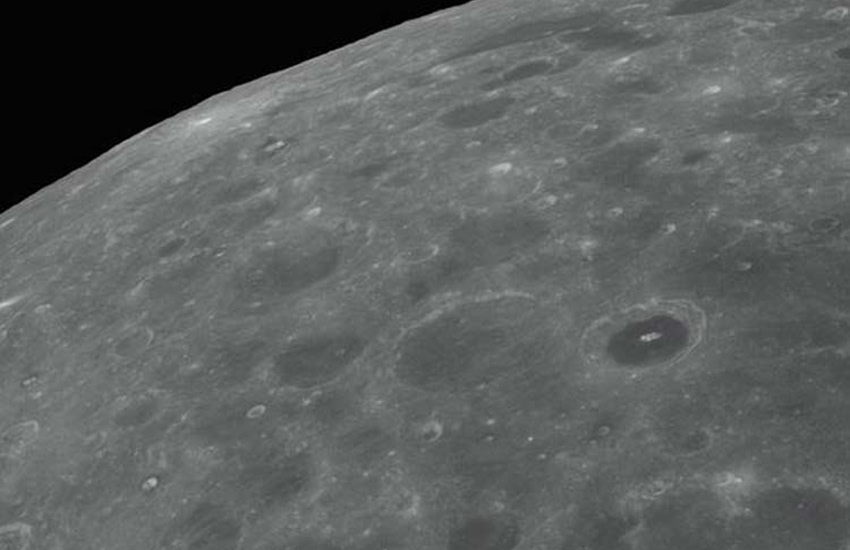The Blue Ghost Mission 1, part of NASA’s Commercial Lunar Payload Services (CLPS) initiative, has marked a significant milestone in lunar exploration. Launched on January 15, 2025, and successfully landing on March 2, 2025, this mission is designed to push the boundaries of technology demonstrations, scientific exploration, and commercial lunar capabilities.
Among its many objectives, one of the most exciting aspects is its potential contribution to space mining through the Lunar Magnetotelluric Sounder (LMS).
What is the Blue Ghost Mission?
The Blue Ghost lunar lander, developed by Firefly Aerospace, is a commercial lunar lander that has now become the first private spacecraft to achieve a successful soft landing on the Moon.
With a payload of 10 scientific and technology instruments, the mission is set to conduct 14 days of surface operations near Mons Latreille in Mare Crisium. This volcanic feature offers a prime location for studying lunar subsurface characteristics, magnetic fields, and potential mineral deposits.
Firefly’s Mission Operations Center is managing real-time operations, ensuring data is transmitted efficiently through the newly deployed X-band antenna. The lander’s huge solar panels provide power for the mission, including sample collection, dust mitigation experiments, and geophysical studies that could support future human missions.
How Blue Ghost Landed on the Moon

The Blue Ghost Mission 1 successfully touched down on the Moon on March 2, 2025, at 2:34 a.m. CST, marking the first fully successful Moon landing by a commercially developed lander.
The landing sequence included several key maneuvers:
- Descent Orbit Insertion (DOI) – Sent on March 1, 2025, to ensure proper trajectory before a planned comms blackout.
- Final Descent Preparation – After multiple lunar orbit maneuvers, Blue Ghost began its final descent at 1:49 a.m. CST on March 2.
- Powered Descent Initiation (PDI) – A nine-minute braking burn at 2:22 a.m. CST reduced velocity from 1,700 to 40 meters per second.
- Autonomous Terrain Navigation – Vision-based hazard detection ensured a safe landing site.
- Final Descent and Soft Landing – At 2:32 a.m. CST, the main engine shut off, and RCS thrusters slowed the lander to 1 meter per second before landing at 2:34 a.m. CST.
Shortly after, Blue Ghost transmitted its first images, capturing the lunar horizon with Earth in the background.
Check out this mission animation video to see what it looked like.
Over the next 14 days, the lander will conduct geophysical studies, technology demonstrations, and lunar dust analysis, paving the way for future lunar research, space mining, and human exploration.
10 Payloads on Blue Ghost
The Blue Ghost Mission 1 is carrying 10 scientific and technology payloads.These instruments are designed to advance lunar research, test new technologies, and prepare for future human missions.
Here are the the 10 payloads aboard Blue Ghost Mission 1:
- Lunar Magnetotelluric Sounder (LMS) – A geophysical instrument designed to measure the Moon’s electrical conductivity profile to study its mantle structure, thermal evolution, and potential mineral deposits.
- Lunar PlanetVac – A regolith sample collection system developed by Honeybee Robotics to test how lunar soil can be gathered for future missions.
- Electrodynamic Dust Shield (EDS) – A dust mitigation experiment designed to test electrostatic methods for removing lunar dust from surfaces, helping future landers and equipment withstand the harsh lunar environment.
- SCALPSS (Stereo Cameras for Lunar Plume-Surface Studies) – A camera system that will capture how rocket exhaust interacts with the lunar surface, providing valuable insights for future landing site preparations.
- Lunar GNSS Receiver Experiment – A test of Global Navigation Satellite System (GNSS) capabilities to determine if Earth-based navigation signals can assist in lunar positioning.
- Radiation-Tolerant Computing Experiment – A test of radiation-resistant computing systems designed to improve hardware reliability for long-duration space missions.
- X-ray Imaging Experiment – A technology demonstration designed to study solar influences and radiation effects on the lunar surface.
- Lunar Subsurface Drilling Test – A technology experiment to explore methods for drilling into the Moon’s surface, which could be critical for resource extraction and future construction.
- Solar Wind Interaction Study – An investigation into how solar wind affects the lunar surface, providing insights into space weather and its impact on future lunar missions.
- Lunar Surface Environmental Monitoring – A general suite of instruments designed to study the lunar environment, including temperature fluctuations, magnetic fields, and surface conditions.
All these instruments will provide invaluable information, but there’s one that’s particularly important for the space mining industry.
The Lunar Magnetotelluric Sounder (LMS)
One of the most significant instruments aboard Blue Ghost is the Lunar Magnetotelluric Sounder (LMS), developed by Southwest Research Institute.
The LMS is a geophysical instrument designed to probe the lunar subsurface, helping scientists understand the Moon’s internal composition. This is a major development for lunar exploration, as it could provide the first-ever detailed conductivity profile of the Moon’s interior.
In simple terms, magnetotellurics (MT) is a method used on Earth, among other things, to detect underground mineral deposits by measuring variations in electrical conductivity. This same principle applies to the LMS, which will study how electric and magnetic fields interact with the Moon’s crust and mantle.
By analyzing these interactions, LMS can:
- Differentiate between mantle and crust structures.
- Detect conductive bodies, which could indicate accumulation of metals.
- Analyze temperature structures and thermal evolution, thus providing insights into how the Moon formed and cooled.
- Investigate the presence of residual water in regions associated with past volcanic activity.
The LMS is particularly useful for mineral exploration on Earth. On Earth, magnetotelluric surveys are used to locate ore bodies and oil reserves. If LMS detects conductive regions beneath the lunar surface, it could be the first step in identifying commercially viable mineral deposits on the Moon.
How LMS Works
The LMS system consists of several components designed for precision mapping:
- Fluxgate Magnetometer – Mounted on a 2.5-meter mast, this device measures fluctuations in the Moon’s magnetic field, which can reveal underground structures.
- Deployable Electrodes – Four spring-launched electrodes extend 20 meters from the central electronics box, forming a 40-meter baseline for measuring electrical conductivity.
- Central Electronics Box – The processing hub that collects data, correlates electric and magnetic field variations, and transmits findings back to Earth.
The LMS operates by observing how the solar wind and Earth’s magnetosphere interact with the Moon’s surface. These external influences create natural electric currents that penetrate the Moon’s crust and mantle. By studying how these currents move through different subsurface layers, LMS can determine what materials are present and how deep they extend.
One of the key science objectives is to determine the structure of the Procellarum KREEP Terrane, an area rich in potassium, rare earth elements, and phosphorus (KREEP). These elements are linked to past volcanic activity and could indicate valuable resources for future lunar mining operations.
Why This Matters for Lunar Exploration

The success of LMS and other payloads on Blue Ghost could pave the way for future space mining and resource utilization. If scientists can identify mineral-rich regions, future commercial companies could establish automated extraction operations, reducing dependency on Earth’s resources and supporting a sustained human presence on the Moon.
Beyond space mining, LMS data will help answer a few critical scientific questions:
- How has the Moon’s interior evolved over time?
- What role does the solar wind play in shaping the Moon’s surface?
- How can we better prepare for human exploration and resource extraction?
The Blue Ghost Mission 1 marks an important step in lunar exploration, gathering insights that could shape future missions. As surface operations continue, the data collected may reveal new possibilities for understanding the Moon’s subsurface and its potential resources.
While the mission will soon conclude, its impact could extend far beyond, influencing how we explore and utilize space in the years to come.